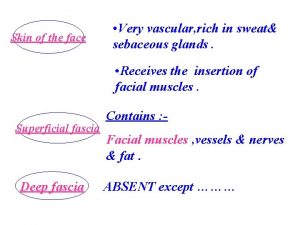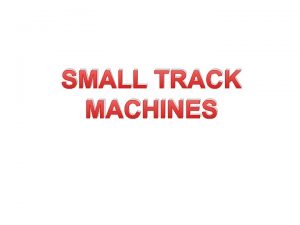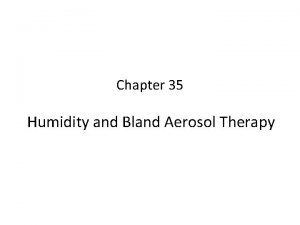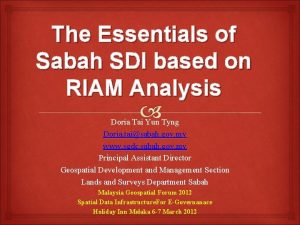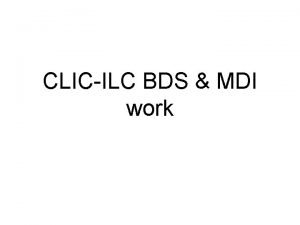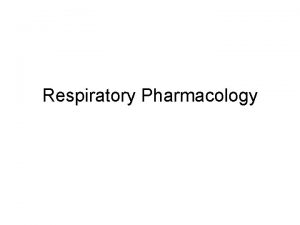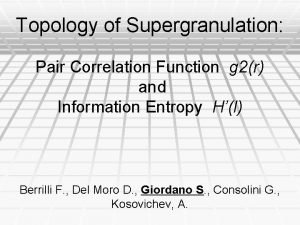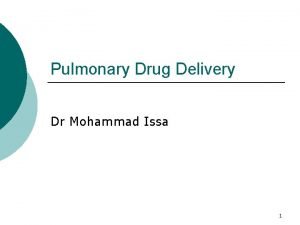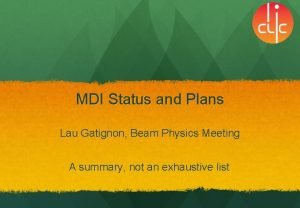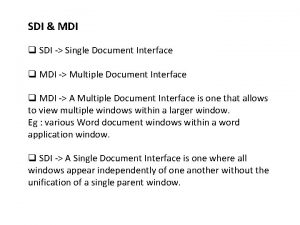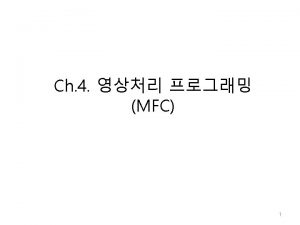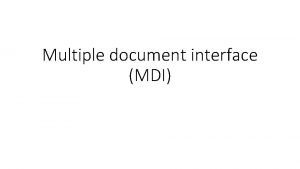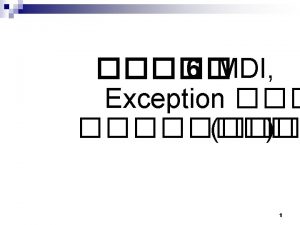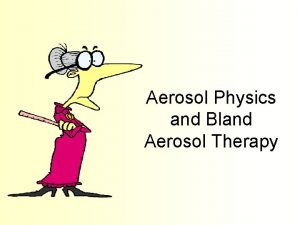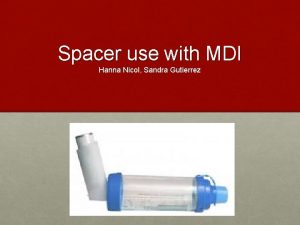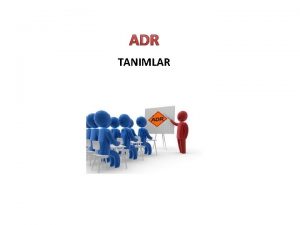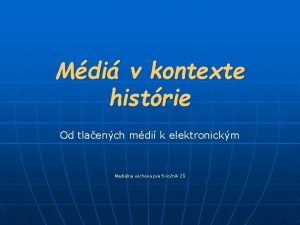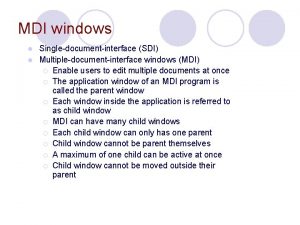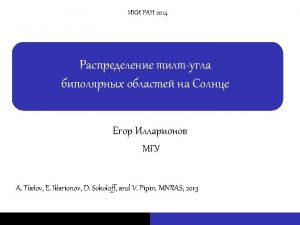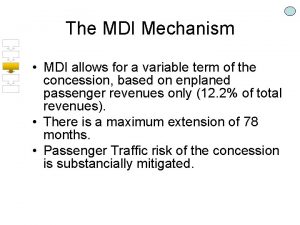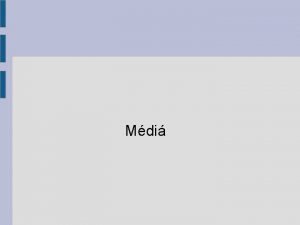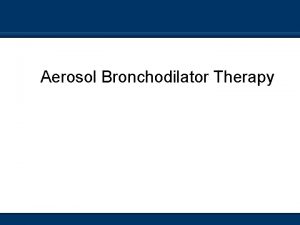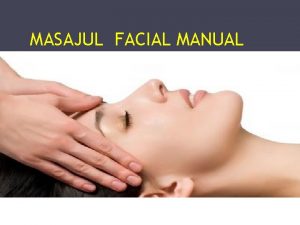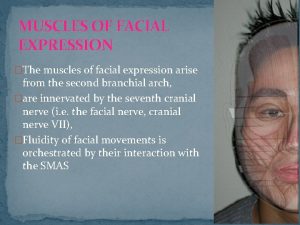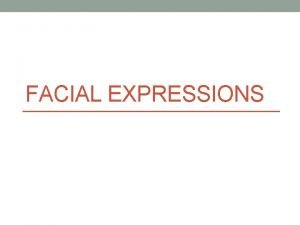AEROSOL THERAPY AEROSOL THERAPY p MDI Spacer facial


























- Slides: 26

AEROSOL THERAPY

AEROSOL THERAPY • p. MDI + Spacer + facial mask • DPI • NEBULIZERS

Metered Dose Inhalers • A metered-dose inhaler (MDI) is a device that delivers a specific amount of medication to the lungs, in the form of a short burst of aerosolized medicine that is usually self-administered by the patient via inhalation. It is the most commonly used delivery system for treating asthma, chronic obstructive pulmonary disease (COPD) and other respiratory diseases.

p. MDI (pressurised metered dose inhaler) Indications for use: • ability to follow instructions • stable ventilatory pattern • adequate inspiratory capacity (>900 m. L) • ability to mechanically coordinate actuation and breathing

p. MDI – procedure • Shake canister, prime according to drug being used • Place MDI between lips, mouth closed, tongue out of the way • Exhale to end tidal volume • Start inhaling slowly, actuate canister • Inhale slowly to TLC • 5 -10 sec breath hold • Exhale normally • Repeat after 1 minute

p. MDI - Advantages • portable and compact • efficient, reproducible aerosol dose delivery • short treatment time • no drug preparation or contamination • some are breath-actuated

p. MDI - disadvantages • coordination and instruction required • fixed drug concentrations, more actuations • airway irritation from propellant may occur • high oropharyngeal loss if spacer is not used • environmental release of chloroflourocarbons • Not all medications available

p. MDI + Spacers - Indications for use • Inhalation of drugs from an MDI: optimal lung delivery and minimizes oropharyngeal deposition • Patients with poor hand-breathing coordination

Spacers Advantages • increases time and volume to allow aerosol particle ageing which reduces particle size • evaporation of propellant • reduced oropharyngeal particle deposition • removes the need for hand-breath coordination

Spacers Disadvantages • large • contamination • some assembly • increased treatment time

DPI - Dry Powder Inhaler Use: • load dose/capsule as instructed • exhale fully away from the device • lips on mouthpiece • inhale quickly • repeat if powder remains in the device


DPI - Advantages • small and portable • short prep and admin times • Breath actuated • Less coordination • Dose counter

DPI - disadvantages • high inspiratory flowrate needed • requires coordination to load capsule • not all medications available

Nebulizers Indications: • person unable to follow instruction for MDI • poor inspiratory capacity • cannot inspiratory hold • rapid/unstable ventilatory pattern • non-standard drug concentration/solution

Nebulizers Use: • 3 -5 m. L, 6 -8 L/min air flow • < 10 mm. treatment time • slow deep breaths, insp. hold if possible, but any breathing pattern is probably effective

Nebulizers - Advantages • any drug solution, concentration or mixture, air or oxygen • uncoordinated, very young, or in acute distress • effective with low inspiratory flows or volumes • inspiratory pause not required

Nebulizers - Disadvantages • equipment is cumbersome and expensive • longer treatment time • requires cleaning, equipment contamination possible • facemask gives a cold wet spray, face and nasal deposition • requires compressed gas source (oxygen or compressor)


DRUGS • Bronchodilatators • ICS • Adrenaline • Mucolitics • Antibiotics • Saline • Dornaze alfa

VENTOLIN (SALBUTAMOL) p. MDI: • 100 ug/single inhalation dose • Typical dosing: 3 x 2 inhalation + 2 inhalation if necessery Nebulizer • 2, 5 mg/2, 5 ml

BERODUAL (FORMETREOL + IPRATROPIUM BROMIDE) Nebulizer • 1 ml = 20 drops • Dose: 1 drop/kg maximum: 40 drops (2 ml) + 3 ml 0, 9% Na. Cl

PULMICORT, NEBBUD (BUDESONIDE) Nebulizer • 250 ug/2 ml • 500 ug/2 ml • 1000 ug/2 ml

FLIXOTIDE (FLUTICAZON) • p. MDI 50 ug/inhalation dose 125 ug/inhalation dose 250 ug/inhalation dose

MUCOSOLVAN (AMBROSOL) Nebulizer: • 7, 5 mg/ml

ADRENALINE • 1 -4 mg + 0, 9% Na. Cl
 Facial veins and arteries
Facial veins and arteries Spacer w kosmosie
Spacer w kosmosie Boxing wax uses
Boxing wax uses Altered cast impression
Altered cast impression Electronic toe load measuring device
Electronic toe load measuring device Custome tray
Custome tray Humidity therapy
Humidity therapy Inrevisible
Inrevisible Medical development international
Medical development international Mdi vs dpi
Mdi vs dpi Mdi work
Mdi work Tdi
Tdi Mdi pharmacology
Mdi pharmacology Mdi vacuum
Mdi vacuum Mdi 768
Mdi 768 P mdi
P mdi Isopa training
Isopa training Mdi status
Mdi status Mdi'q
Mdi'q Voiture air comprimé mdi
Voiture air comprimé mdi Sdi and mdi
Sdi and mdi Middle years development instrument
Middle years development instrument Salbutamol mdi
Salbutamol mdi Maikresse 72
Maikresse 72 Mdi vacuum
Mdi vacuum What is the importance of multiple document interface
What is the importance of multiple document interface Both psychoanalysis and humanistic therapy stress
Both psychoanalysis and humanistic therapy stress
